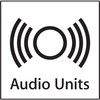$39 Anukari Black Friday Sale starts now
Hey!
Evan here. I’m writing to share two big updates.
First, Anukari will be on sale for $39 for Black Friday, from November 14th through December 4th! You can buy it at anukari.com. (Be sure to try the free demo.)
Second, the latest 0.9.21 Beta release of Anukari (download here) has some huge performance improvements and now runs on Intel Macs.*
It’s now possible to run Anukari much more confidently, especially on less powerful machines, and you’ll be able to play with more complex presets. If you’ve had trouble with audio glitches in the past, it’s definitely worth trying this update. Here's an example of a heavy preset that most folks will be able to run:
In addition to the big performance boost, there are all kinds of new features, such as drag-and-drop macros, parameter randomization, a “cinematic mode” to expand the 3D visuals, and more. Here's a quick intro to the new macros:
Thanks again for your support. I look forward to releasing many more improvements to Anukari as it makes its way toward the 1.0 release.
Regards,
-Evan
* Early feedback on the Intel Mac support has been extremely positive, but it’s still very new, so please email me at [email protected] if you discover any issues!
Vote for Anukari in the 2025 MIDI Innovation Awards!
Hello, everyone!
It's been two months now since the Anukari Beta launched, and a lot has happened!
First: Anukari is an entry in the 2025 MIDI Innovation Awards, and I would really appreciate your vote. You can vote on this page by entering your email and then navigating to the Software Prototypes/Non-Commercial Products category. The prize for winning would be a shared booth for Anukari at the NAMM trade show, which would be a big deal for getting the word out.
There have been several new versions of Anukari since the Beta launched, and we are now on version 0.9.10, which you can get from https://anukari.com/download. Some of the improvements since the original Beta launch include:
- Multichannel audio input/output support, up to 50x50 channels
- Support for ASIO audio devices
- The ability to trigger MIDI notes through the modulation system
- 20 new factory presets
- Two new LFO shapes
- Much better performance on macOS devices
- Numerous crash fixes and other bug fixes
Here's a demo of how to use the new MIDI Note Trigger feature:
Thanks you for all your support! Anukari's sales are making it possible for me to continue developing it, and there is a TON that I want to do to continue making it the most innovative synthesizer.
Regards,
-Evan
Anukari Beta on sale now, and the free demo is available!
Hello everyone,
After more than two years of development, I am extremely happy to announce that the first public Beta release of Anukari is available for purchase, and a free demo can now be downloaded.
The free demo allows you to use all of Anukari’s features, with the only restriction that periodically the audio from Anukari is replaced with white noise for a few seconds.
MSRP for Anukari is $140, but for a limited time the Beta version will be offered with a 50% discount, for a price of $70. The free demo and purchase options are available at anukari.com.
Since the last newsletter, Anukari has received a huge number of improvements. Some of the highlights include:
- Automatic detection and correction of physics explosions
- Two plugins: an instrument plugin and an effect plugin
- 200+ instrument and effect presets
- 10 skyboxes and 8 3D model skins to choose from
- A new drag-and-drop “palette” for creating new objects in the world
- Simplified click-and-drag controls for the 3D camera
- Color-coding hints when creating new connections between objects
- Tested for compatibility with 17 popular DAWs
- Added AAX plugins for compatibility with Pro Tools
- Fixed innumerable crashes and bugs
- … and too many other usability improvements to list
Anukari now has a detailed user manual and FAQ page, and over the next few weeks we will be releasing a series of concise video tutorials that cover all of Anukari’s features.
Check out the launch announcement video:
Regards,
-Evan










 The Audio Units logo and the Audio Units symbol are trademarks of Apple Computer, Inc.
The Audio Units logo and the Audio Units symbol are trademarks of Apple Computer, Inc. VST is a trademark of Steinberg Media Technologies GmbH, registered in Europe and other countries.
VST is a trademark of Steinberg Media Technologies GmbH, registered in Europe and other countries.